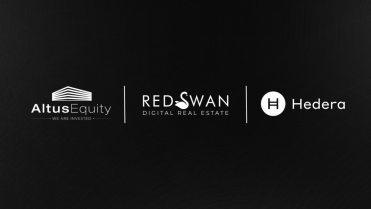Bitcoin Tax Strategy for Real Estate
The recent surge in bitcoin is minting millionaires and billionaires daily. Individuals who invested in emerging cryptocurrencies are reaping the benefits of huge gains. The price of Bitcoin has spiked from around $9,000 a year ago to almost $63,000 today, equivalent to $1.2 trillion market value for all Bitcoin outstanding. It is good to know a good Bitcoin tax strategy for real estate.
In reality, these gains are on paper only and cannot be realized unless the asset is sold and profit is realized. As good as it sounds to make a profit and reward yourself for taking risks, there are two problems that most crypto owners fear. First, once you make a profit, the IRS is waiting instantly for their cut. Most legitimate exchanges and custody companies in the US are licensed and/or regulated entities — by entities such as state banking regulators and the Securities and Exchange Commission — and they hold AML/KYC policies on clients with crypto balances. Once the sale is triggered, the IRS is waiting for their tax dollars. Depending on short-term or long-term capital gains, your total Federal and State tax liability can be anywhere from 25% to nearly 50% of profits. The second feared problem is lost participation in the future upside of the cryptocurrency. Bitcoin could continue to rise but after selling, the investor has less or no exposure to the asset. In fact, selling is the most feared problem of Bitcoin holders, particularly with some respected market prognosticators anticipating the long-term value of Bitcoin to reach $100,000 or more.
Innovative financial institutions are now lending on Bitcoin to help provide liquidity options for crypto holders to prevent ultimate dispositions. If you need to buy a new car or home, you do not have to liquidate your Bitcoin- you can borrow against it. This solution allows you to have some liquidity while keeping your option open for an additional increase in asset value. Sounds like a great solution, except we all know that borrowing money to purchase recreational expenses or non-income-producing assets comes with risks. If your Bitcoin collateral falls in value, the lender may demand partial loan repayment and/or additional assets to back the loan. If the borrower is unable to fulfill either, the lender can sell the Bitcoin asset to cover the difference in value drop. Lenders normally protect themselves with put and call options to collar the collateral value of the Bitcoin asset. Even though they are protected in a down Bitcoin market, they will still make you the borrower pay the difference in paper loss of the collateral. I would not recommend crypto investors borrow against their asset to purchase anything non-income producing. If you need to cover the cost of non-income producing items like college tuition, a vacation home, boat, or wedding, it would be better to outright sell some of your Bitcoin and pay cash.
Here is a superior use case for leveraging your Bitcoin and other crypto-assets…Borrow from your Bitcoin balance up to 80% loan to value and use the proceeds to purchase income-producing commercial real estate. Now you can use the leverage to your advantage to: 1) Hedge against the potential drop in Bitcoin value, 2) Generate income based on the spread between the yield of commercial real estate and the cost of the loan for the real estate investment, and 3) Pay no capital gain tax from the borrowed proceeds. Simply put, you can lock in your short-term gain on bitcoin and put it to work in real estate tax-free.
Let us see how this works. Mr. Big Bucks has just made a paper gain of $5,000,000 on their bitcoin holding of $12,000,000 with a total balance of $17,000,000 sitting in his Coinbase account. The probability of a short-term correction that wipes out that gain is high. If Big Bucks sells $5,000,000 of Bitcoin to lock in the gain, short- or long-term taxes could cost up to 50% depending on his State residency. Either way, this substantially eats into the profit and as we mentioned before, participation in future gains is more limited given that Big Bucks has $5,000,000 less exposure to Bitcoin. Why pay up to $2,500,000 in tax when you do not have to? Instead, Big Bucks can do the following. He can take the $17 million Bitcoin balance and borrow up to 60% loan to value (LTV). This would put $10.2 million cash into his wallet to make an investment. Big Bucks than deploys the proceeds into high-quality commercial real estate backed digital tokens with preferred dividends of 8% annually or $816,000. The loan cost can be as low as 4% or $408,000 annually. Big Bucks is now making a net spread of 4% or $408,000 on his investment! Compare that 4% to less than 2% currently on 10-yr US Treasury Bonds. Remember that no Bitcoin was ever sold so Big Bucks still participates in further upside of Bitcoin on his full $17 million exposure! Another significant benefit is that Big Bucks has now diversified his digital assets portfolio into an asset — commercial real estate — that is inherently less volatile than cryptocurrency. The real estate can maintain or increase its value even if Bitcoin is simultaneously falling. The reason the interest rate on the loan can be so low is because of the double collateralization — both the $10.2 million in commercial real estate digital tokens and the $17 million in Bitcoin can serve as security for the $10.2 million loan. Effectively, the LTV is only 38%!
In short, the bitcoin tax strategy outlined above offers three advantages: 1) Your tax-free loan just purchased a solid long-term, cash producing asset, 2) You now have a downward hedge against the Bitcoin through diversification into a more stable asset and 3) The Bitcoin/crypto holding is preserved to take advantage of additional growth.
Tokenization makes it amazingly fast, easy, and efficient for an investor to take advantage of commercial real estate. As I have discussed in previous articles, we at RedSwan CRE are making this a reality. We are engaged in discussions with forward-thinking financial institutions and Fintech players about partnering with us to make the leverage strategy discussed above available to our investors. Investors do not have to sell their crypto — or other assets for that matter — to invest in CRE-backed tokens issued and managed by RedSwan CRE. People sometimes forget that historically, real estate has produced the most fortunes. Including residential, the global real estate market is over $280 trillion (!), making it the largest asset class in the world, equivalent to triple the global stock market. We are making this market more accessible in a digitally native way.
RedSwan CRE has a pipeline of attractive CRE deals. With us, Accredited investors can spread their risk and buy multiple high-quality digital real estate securities with attractive yields at affordable investment minimums. As I have discussed in previous pieces, we conduct deep due diligence of real estate sponsors before presenting any investment opportunity to the public, saving you the due diligence and pursuit costs. Another advantage of digital tokens is the liquidity factor. Once you do purchase digital real estate, you have many options to trade or exit to lock in even higher yields.
Our world has changed. Those who took a chance on cryptocurrency like Bitcoin now have a whole new ecosystem of income-generating, alternative assets to add to their digital portfolios.
It’s always important to know the best bitcoin tax strategy!
Check out our properties to get started in investing in real estate today!






